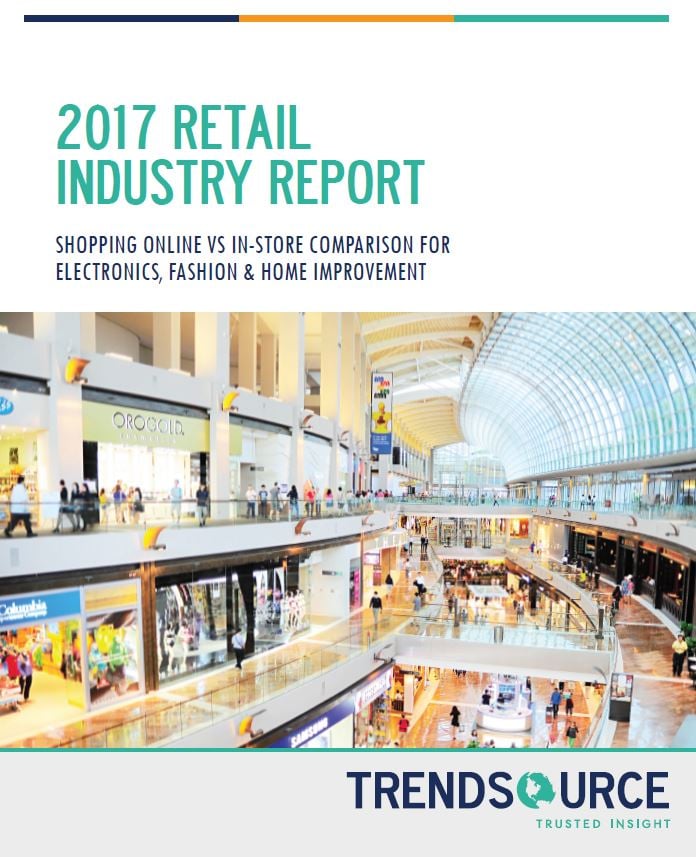When you picture a millennial shopper, they are holding their phone, right? We all have that perception of millennials in retail—that they are shunning brick-and-mortar in favor of online, where they can effortlessly browse endless stock and have items conveniently shipped to their doorstep.
But our 2017 Retail Industry Report offers brick-and-mortar some hope as older and younger millennials continue to prefer in-store fashion, electronics, and home improvement shopping experiences over online. That’s just one of the take-aways from the study, which surveyed over 2,000 individuals between February 20 and March 3 to explore the battlegrounds between online and brick-and-mortar in fashion, electronics, and home improvement retail.
Millennials and Retail (IRL)
Millennials, and every other generation for that matter, resoundingly prefer in-store fashion and home-improvement shopping and slightly prefer in-store electronics shopping.
As we dug a bit deeper, we asked respondents to indicate whether they believed in-store or online offered the better experience in terms of product availability, customer service, pricing, returns and exchanges, and variety of selection. Across all three industries, there were clear winners in four of the five categories, with one notable exception: pricing. Indeed, while respondents agree that online wins in terms of product availability and variety of selection, and that in-store excels in customer service and returns and exchanges, there was no obvious winner on pricing.
Though 62% of electronics shoppers believed that pricing was better online, no clear majority emerged in fashion (online, 51%) and home improvement (55%). This indicates that, in the great struggle between brick-and-mortar and online, pricing may be the final battleground.
Product and Associate Availability
With shoppers so evenly divided, what continues to drive them to brick-and-mortar stores despite the prevalence and availability of online shopping? There is a simple answer and a more complicated one. Simple answer: people want what they want when they want it and—despite same day Prime Now delivery, free two-day shipping, and rumblings of forthcoming drone technology—Amazon and other online retailers have yet to match the instant gratification the in-store checkout line provides. That explains why 85% of electronics shoppers, 83% of fashion shoppers, and 88% of home improvement shoppers cited immediacy as a primary reason to buy in person.
After that, it gets a bit more complicated as in-store drivers vary by industry. For example, for fashion shoppers, the ability to physically confirm an item’s quality/fit motivated 87% of fashion shoppers to browse racks in person, not with a web browser. Obviously, this is far less important to an electronics shopper who may need to confirm specs but does not need to try on a new Roku.
One additional example: whereas 70% of electronics shoppers and 62% of home improvement shoppers are driven to stores seeking advice or assistance from sales associates, only 34% of fashion shoppers sought such advice. When they do desire attention from a sales associate, it is to answer specific questions about specific items, and so, for fashion retailers, the message is clear: back off and allow shoppers to explore for themselves, and have your associates prepared with detailed product information.
What Else is in the 2017 Retail Industry Report?
How can retailers leverage sensory perception to influence customers’ in-store experiences, how do personality types shape the form of associate interaction customers prefer, and how should electronics, home improvement, and fashion associates behave differently from one another?
Find these and other insights by downloading the full report.

